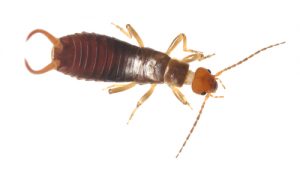Mulch and Pests – Advice from the Pros
By Chris Williams on April 1, 2011.
It’s finally spring and you’re thinking about how many bags of mulch you’re going to need to spruce up the yard. Those of us who are lawn and garden fanatics love mulch and the neat, groomed look that it gives to our yards. But…those of us who also work in pest control know that mulch is notorious for harboring pests.
The problem is with organic mulches (shredded hardwood, for example), but that’s the kind most of us use. Mulch draws pests that are attracted to its protection, moisture, and heat, and also draws pests that are there to feed on other pests. Because organic mulches are made from plant materials that gradually decompose, they attract those insects and pests that feed on decaying material. This includes millipedes, sowbugs or pillbugs, cockroaches, slugs, earwigs, and crickets. During temperature extremes or if the mulch becomes too dry or too wet, these pests may move inside, especially from mulch that is against the foundation.
 A heavy layer of wood mulch against a building can also allow subterranean termites to bypass a chemical treatment or bait stations in the soil. They can travel through the moist, protective mulch above ground and enter the building through foundation cracks, conduits, or weep holes in brick without ever having to tunnel through the soil.
A heavy layer of wood mulch against a building can also allow subterranean termites to bypass a chemical treatment or bait stations in the soil. They can travel through the moist, protective mulch above ground and enter the building through foundation cracks, conduits, or weep holes in brick without ever having to tunnel through the soil.
From a gardener’s standpoint, organic mulches are the mulches of choice since they add nutrients and texture to the soil. Organic mulches include shredded hardwood, pine bark chips, straw, cypress mulch, pine needles, and grass clippings. From a pest control standpoint, inorganic mulches are the best choice. Inorganic mulches are nonplant materials and include gravel, pebbles, rock chips, crushed stone, plastic film, and woven landscaping fabrics. These mulches offer no food and less protection for pests.
So what’s a homeowner to do? Use inorganic mulches wherever you can, especially next to the foundation. Alternatively, leave a dry, mulch-free border around the foundation, 12 inches out from the outside wall. If you simply can’t give up your shredded hardwood mulch, then go lightly on the mulch. All that’s needed is a couple of inches. Mulch that is too deep stays damp for too long. Coarser organic mulches like pine bark nuggets that have spaces for some air circulation can be as deep as 4 inches.